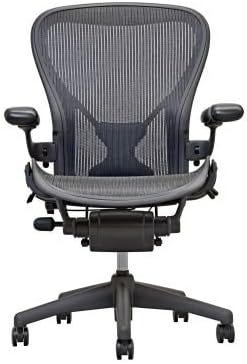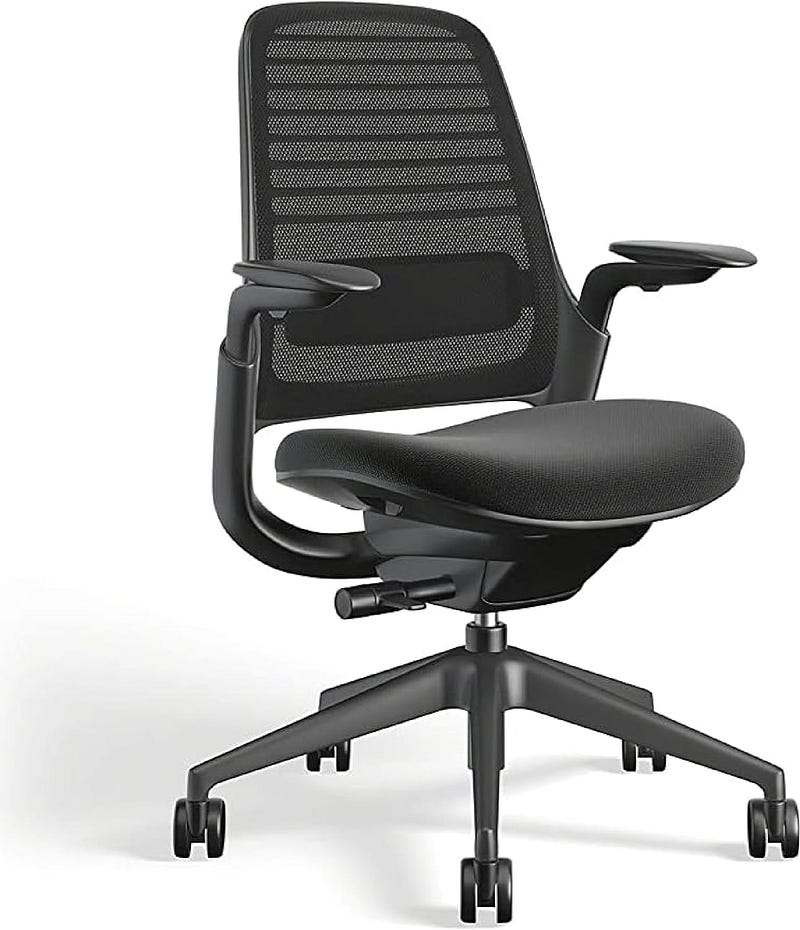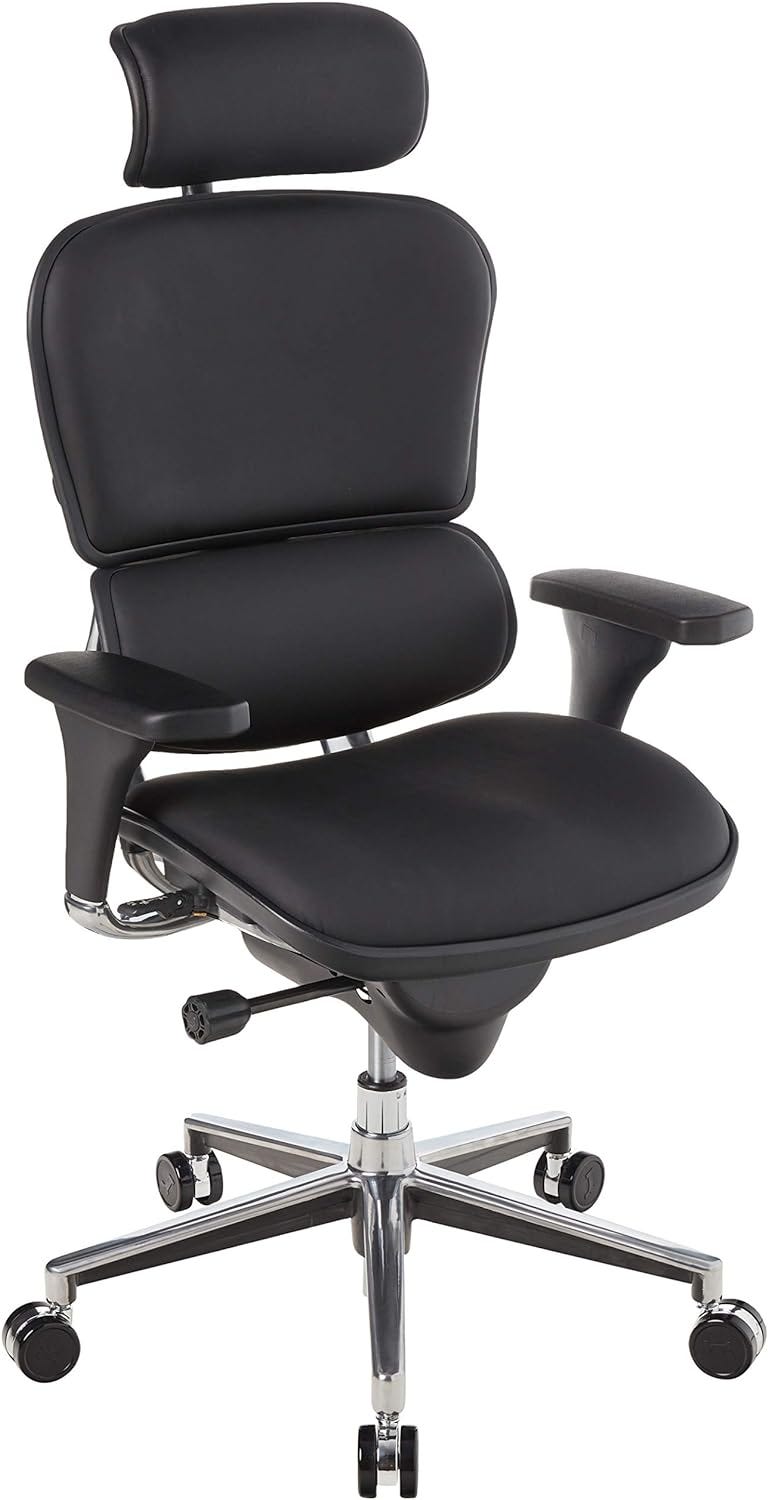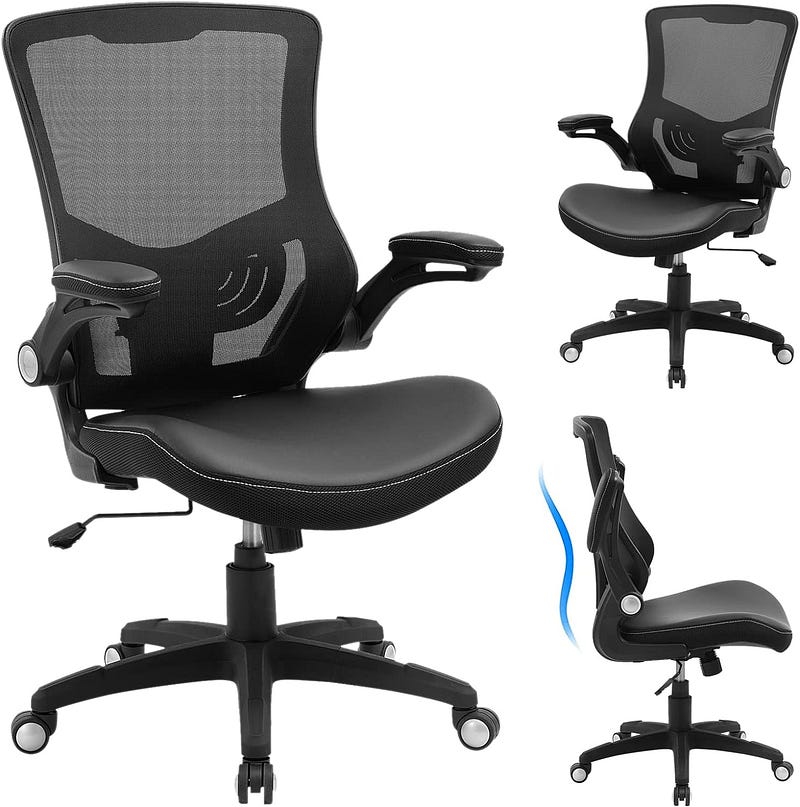
1. Introduction
Ah, the office chair. It’s more than just a place to park your behind during those long work hours. It’s your trusty companion in the battle against back pain, your ally in the quest for productivity, and let’s face it, sometimes it’s the only thing keeping you from face-planting onto your keyboard during that 3 PM slump.
1.1 The Importance of a Good Office Chair
Picture this: you’re sitting in a chair that feels like it was designed by a medieval torture expert. Your back is screaming, your neck is stiff, and you’re pretty sure your tailbone has gone on strike. Sound familiar? Well, my friend, it’s time for an upgrade. A good office chair isn’t just a luxury; it’s a necessity for your health, comfort, and productivity.
1.2 Understanding Ergonomics
Now, before we dive into the world of fancy chairs, let’s talk ergonomics. No, it’s not a new-age fitness trend or a type of exotic fruit. Ergonomics is all about designing and arranging things so that people can use them easily and safely. In the world of office chairs, it means creating a seat that supports your body’s natural posture and movements. Think of it as a hug for your spine!
2. Key Features to Look for in an Ergonomic Office Chair
2.1 Lumbar Support
Your lower back needs love too! Good lumbar support helps maintain the natural curve of your spine. It’s like a supportive friend who’s always got your back… literally.
2.2 Adjustability
One size doesn’t fit all when it comes to office chairs. Look for chairs with adjustable seat height, backrest, and armrests. It’s like having a chair that can transform to fit you perfectly, minus the cool robot sounds.
2.3 Seat Depth and Width
Your chair should be wide enough to support you comfortably and deep enough to let you sit with your back against the backrest while leaving about 2–4 inches between the back of your knees and the seat of the chair. It’s like Goldilocks’ chair — not too big, not too small, but just right.
2.4 Armrests
Armrests should allow your shoulders to relax and your elbows to rest comfortably. They’re like little hammocks for your arms!
2.5 Material and Padding
The chair should have enough padding to be comfortable to sit on for extended periods. Breathable fabric is a plus, unless you enjoy the feeling of peeling yourself off a leather chair on a hot day.
3. Top 5 Ergonomic Office Chairs for Back Pain
3.1 Herman Miller Aeron

The Rolls Royce of office chairs. It’s so fancy, it might make you feel underdressed for work.
3.1.1 Key Features
- Adjustable PostureFit SL supports your spine
- 8Z Pellicle suspension seat and back for better air circulation
- Fully adjustable arms
- See On Amazon : https://amzn.to/4cCyscM
3.1.2 Pros and Cons Pros:
- Exceptional comfort and support
- Durable and long-lasting
- Environmentally friendly (made with recycled materials)
Cons:
- Expensive (you might need to sell a kidney)
- No headrest in the basic model
3.2 Steelcase Leap

The chameleon of office chairs, adapting to your every move.
3.2.1 Key Features
- LiveBack technology changes shape to mimic your spine movements
- Adjustable lumbar support
- Flexible seat edge to reduce pressure on thighs
- See On Amazon : https://amzn.to/4cY1BPZ
3.2.2 Pros and Cons
Pros:
- Highly adjustable for personalized comfort
- Promotes movement throughout the day
- Available in a variety of colors (for those who like to coordinate their chair with their outfit)
Cons:
- Armrests can be a bit wobbly
- Assembly required (time to dust off that Allen wrench)
3.3 Ergohuman High Back Swivel Chair

For those who want to feel like a superhero while answering emails.
3.3.1 Key Features
- Adjustable lumbar support and headrest
- Synchro-tilt mechanism and seat depth adjustment
- Breathable mesh back
- See On Amazon : https://amzn.to/3RM0daU
3.3.2 Pros and Cons
Pros:
- Excellent back and neck support
- Lots of adjustable features
- Looks like it belongs in a spaceship (in a good way)
Cons:
- Armrests aren’t as adjustable as some other models
- Might be overkill for shorter users
3.4 Humanscale Freedom

Freedom from back pain, that is.
3.4.1 Key Features
- Self-adjusting recline
- Pivoting backrest
- Gel seat cushion
- See On Amazon : https://amzn.to/45JJdYq
3.4.2 Pros and Cons
Pros:
- Automatically adjusts to your weight and movement
- Sleek, minimalist design
- Very comfortable for long periods of sitting
Cons:
- Fewer manual adjustments available
- Armrests can be a bit hard
3.5 SIHOO Ergonomic Office Chair

Proof that you don’t need to break the bank for good back support.
3.5.1 Key Features
- Adjustable lumbar support and headrest
- Breathable mesh back
- 3D adjustable armrests
- See On Amazon : https://amzn.to/3VMnxXd
3.5.2 Pros and Cons
Pros:
- Affordable compared to other ergonomic chairs
- Good range of adjustability
- Sturdy construction
Cons:
- Not as durable as more expensive options
- Assembly can be a bit tricky (time to call in that favor from your handy friend)
4. How to Choose the Right Chair for You
4.1 Consider Your Body Type
Are you tall? Short? Somewhere in between? Make sure the chair you choose can adjust to fit your unique body. Remember, Goldilocks didn’t settle for a chair that wasn’t just right, and neither should you!
4.2 Think About Your Work Environment
Do you work in a sweltering office or a freezing one? A mesh back might be great for ventilation, but not so much for warmth. Also, consider the aesthetic of your workspace. You don’t want your chair to stick out like a sore thumb (unless that’s your thing, in which case, rock on!).
4.3 Set a Budget
Yes, a good chair is an investment in your health and productivity. But that doesn’t mean you need to take out a second mortgage. Set a realistic budget and stick to it. Your back and your bank account will thank you.
5. Tips for Maintaining Good Posture
5.1 Adjust Your Chair Correctly
Even the fanciest chair won’t help if it’s not adjusted properly. Take the time to get it right. Your chair should fit you like a glove… if gloves were meant for your whole body.
5.2 Take Regular Breaks
No chair, no matter how ergonomic, is meant for sitting in for 8 hours straight. Get up, stretch, do a little dance. Your body needs movement!
5.3 Stretch and Move
Speaking of movement, try some simple stretches at your desk. Touch your toes, roll your shoulders, do some neck rotations. Just try not to knock over your coffee in the process.
6. Conclusion
There you have it, folks! The ultimate guide to choosing an ergonomic office chair for back pain. Remember, the best chair is the one that fits you and your needs. It might take some trial and error, but your back will thank you in the long run.
Investing in a good office chair is like investing in a good mattress — you spend a lot of time using it, so it might as well be comfortable! Plus, think of all the money you’ll save on chiropractor visits and pain relievers.
So go forth, sit comfortably, and conquer that to-do list. Your productivity (and your spine) will never be the same!
7. FAQs
- Q: How often should I replace my office chair? A: Generally, a good office chair should last about 7–10 years. But if you start feeling like you’re sitting on a medieval torture device, it might be time for an upgrade sooner.
- Q: Can an ergonomic chair really help with back pain? A: Absolutely! A good ergonomic chair can help improve your posture, reduce strain on your back, and provide support where you need it most. It’s like a superhero cape for your spine!
- Q: Are expensive chairs always better? A: Not necessarily. While high-end chairs often have more features and better build quality, there are plenty of mid-range options that can provide excellent ergonomic support. It’s more about finding the right fit for you and your budget.
- Q: I work from home. Do I really need an ergonomic office chair? A: Unless you’ve mastered the art of levitation, yes! Whether you’re in a corporate office or your home office, your back doesn’t know the difference. Give it the support it deserves.
- Q: Can I try out these chairs before buying? A: Many office furniture stores have showrooms where you can test out chairs. Some online retailers also offer trial periods or generous return policies. Remember, choosing a chair is a bit like dating — you might need to try a few before you find “the one”!